Standing at the edge of Cala Pregonda, I just stared in disbelief. How could a place this wild and striking exist in Menorca?
You’ll spot this beach right away—its red sand and rocky, almost lunar landscape make it one of the most unique spots on the island’s untamed north coast.
It feels like a world apart from the classic white-sand coves you might expect. There’s a raw, untouched beauty here, almost like stepping onto another planet.
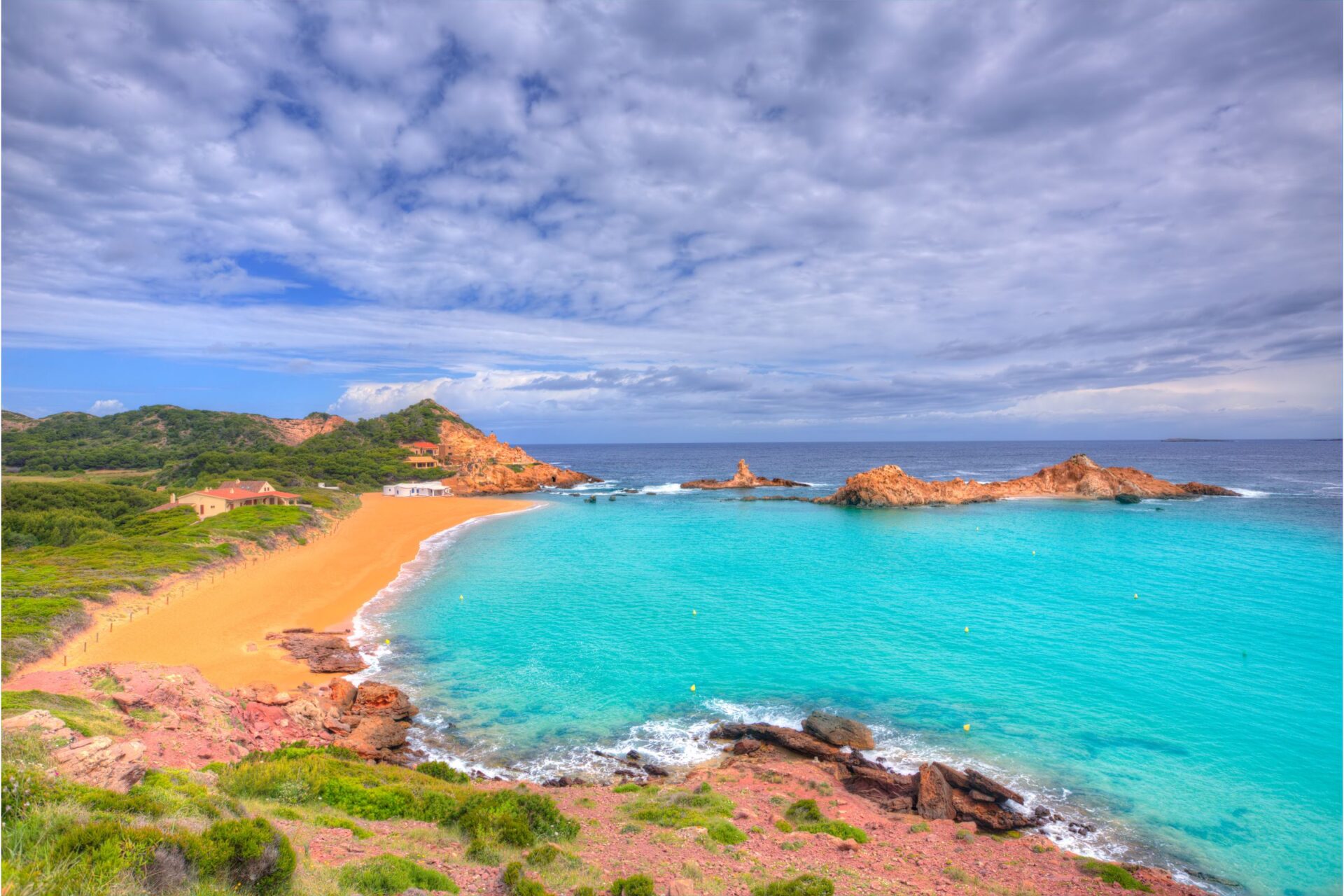
You can’t just park and stroll onto Pregonda. Getting here takes a bit of adventure and a willingness to leave the crowds behind. But the reward? Crystal-clear blue water and this peaceful vibe that’s perfect for anyone who loves nature and wants something different from the usual beach scene.
As I explored Pregonda, I wandered through small coves and climbed over strange rock formations. The shallow, warm water felt perfect for swimming or snorkeling.
If you’re after an off-the-beaten-path beach experience in Menorca, Cala Pregonda brings dramatic views and a real sense of discovery.
Discovering Pregonda Beach: A Wild North Coast Gem
Pregonda Beach caught me off guard with its bold colors and weird rock shapes. The north coast of Menorca feels wild and untouched, but Pregonda really stands out with its red sands and otherworldly vibe.
First Impressions of the Red Sands
The moment I stepped onto the beach, the red-gold sand stopped me in my tracks. Most beaches here have white or pale sand, but Pregonda breaks the rules with burnt orange grains scattered everywhere.
These colors come from the local rocks, full of iron-rich minerals. As I walked along, the contrast was honestly stunning—deep red sand meeting that clear Mediterranean blue.
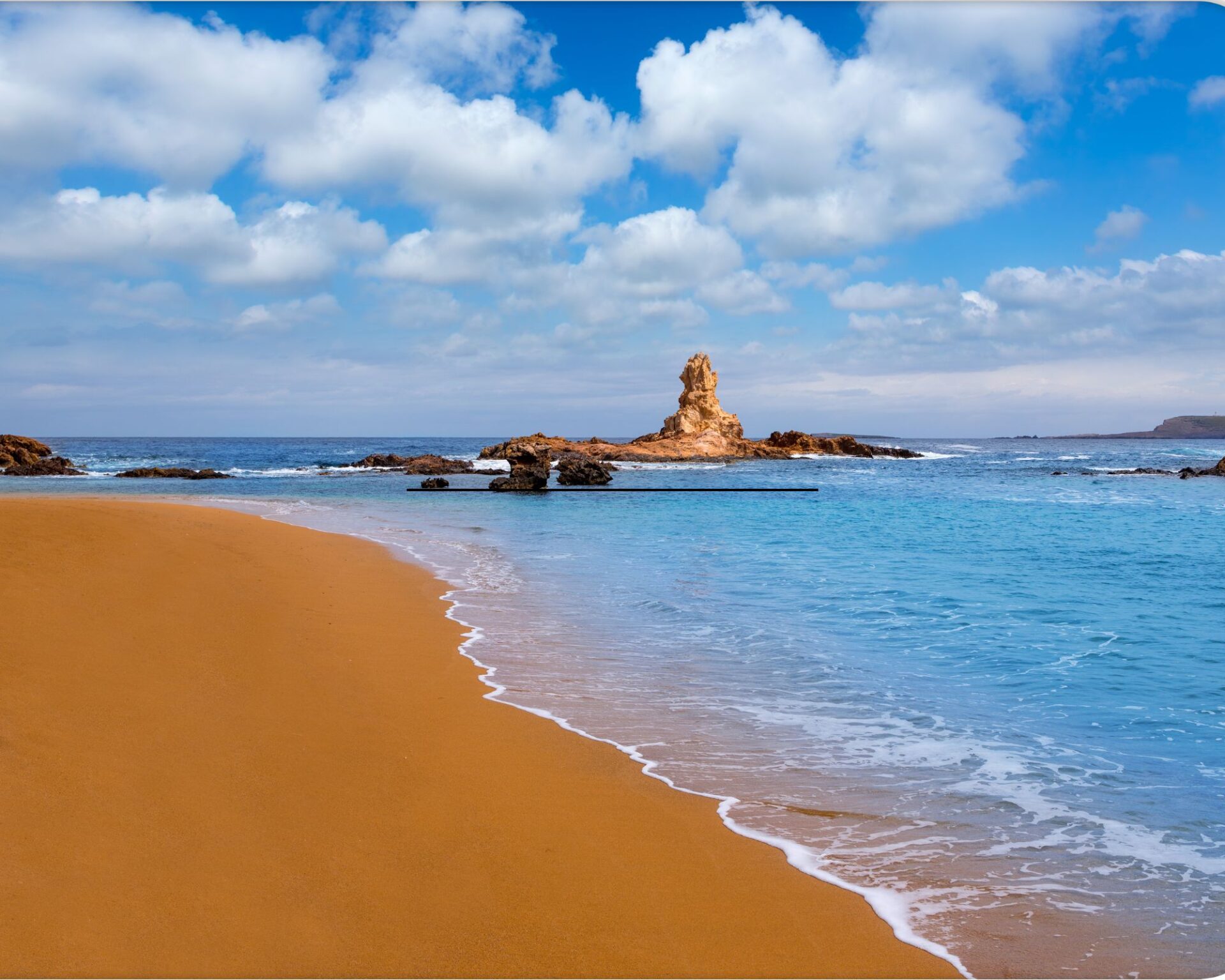
Under my feet, the sand felt softer than I expected. The red grains were fine and warm, which made lounging on the shore extra comfy.
The beach felt secluded. I only heard the waves and, every now and then, a seabird calling overhead.
Just a heads-up: you can’t drive right up to Pregonda. I parked at Binimel·là and walked about 30 minutes along a sandy, sometimes rocky path.
The walk was so worth it. The colors of Pregonda hit me as soon as I rounded the last bend.
The Unique Geological Formations
Cala Pregonda’s rock formations really steal the show. Big, jagged outcrops jut out from the beach and the water, creating little pools and inlets.
I spent a while exploring the coves and climbing up a few rocks to get better views. The rocks are rusty red and yellow, shaped by years of wind and sea.
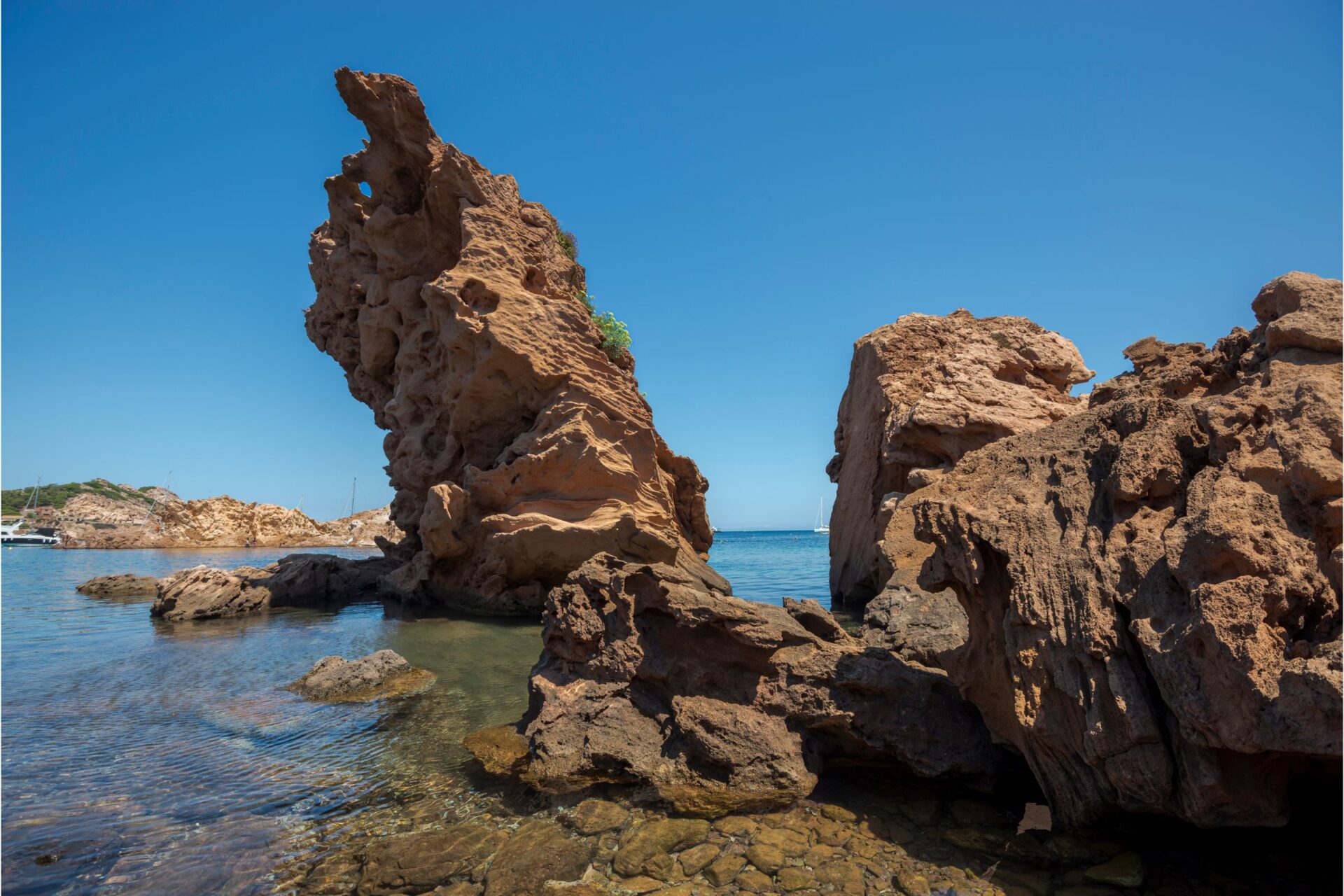
Standing on top, I could see the land curve around the cove, protecting the calm waters inside.
A local explained that this geology is unique in Menorca. These rocks formed millions of years ago, and their colors shift with the sunlight—sometimes glowing almost copper in the late afternoon.
Snorkelers can spot fish darting among the underwater rocks, which adds even more to the experience.
The Enchanting Lunar Landscape
Pregonda doesn’t just look wild—it feels like another world. The landscape brought to mind photos of Mars or the Moon, with those deep reds and rough, scattered stones.
Walking a bit inland, I found ochre hills rising above the beach. Tough green shrubs dotted the slopes, but trees were pretty rare.
The ground was rocky, with odd shapes and patches of soft sand. Every step felt like a little discovery.
Photographers will love the way light plays across this landscape. Mornings bring a pale glow, while evenings make the reds pop and look dramatic.
Spending time here, I felt both isolated and free. I couldn’t help but pause every few meters to snap a photo or just take it all in.
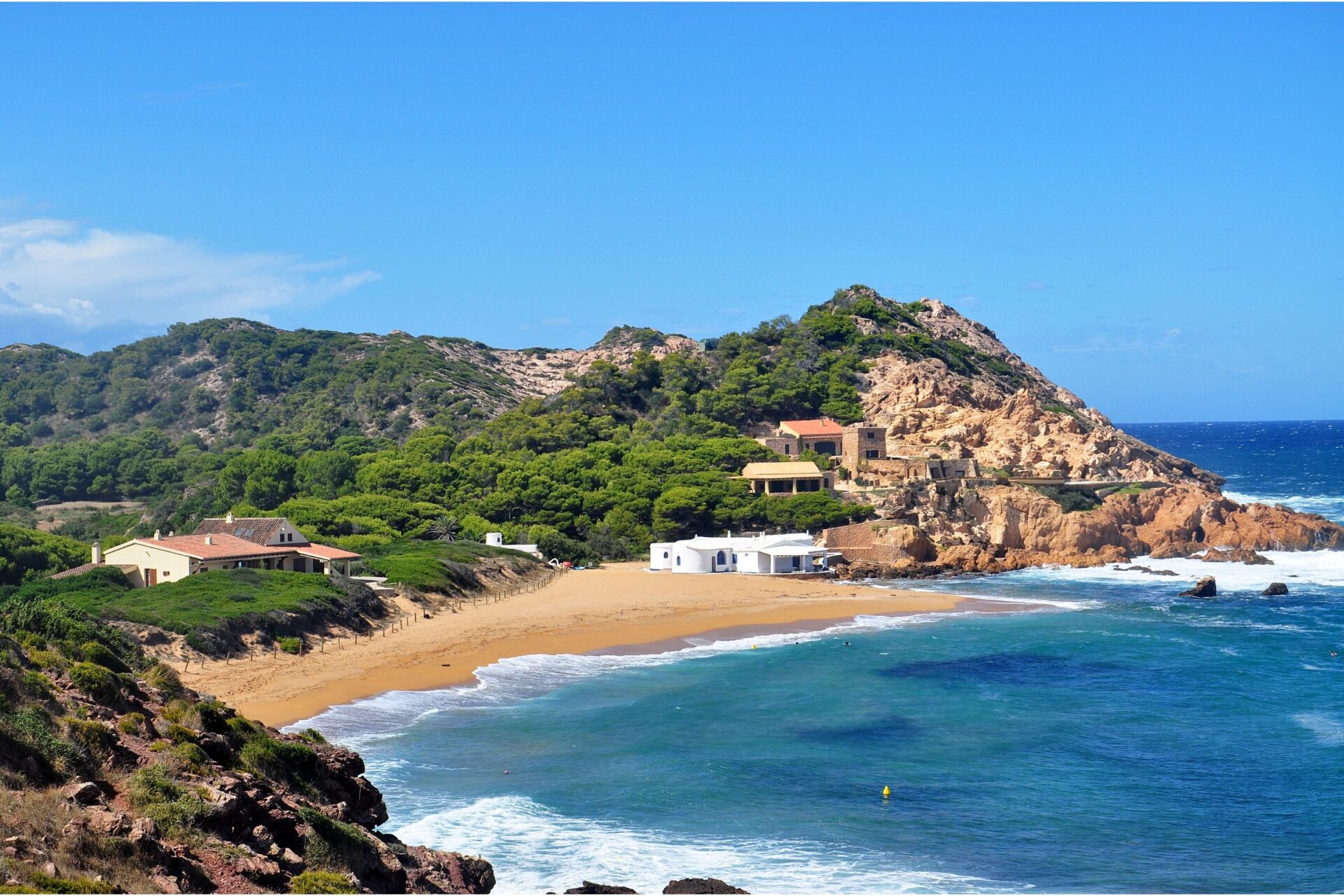
Getting to Pregonda: Tips for Exploring Menorca’s Remote North
Getting to Cala Pregonda is a bit of an adventure, but honestly, that’s part of the fun. You’ll wind through country roads and sun-baked trails, so knowing the best routes and a few tricks really helps.
Best Routes and Travel Options
My drive to Pregonda twisted through Menorca’s rugged countryside. The final parking area sits at Platja Binimel·là—there’s no road that takes you right to Pregonda’s sand.
I found parking at Binimel·là pretty straightforward, even when it was busy. The lot is well marked, but it does fill up fast during peak season.
Getting there early made everything easier and kept the walk cooler.
From the car park, I just followed the signs for Pregonda. The trek isn’t tough, but don’t expect a quick stroll—it took me about 40 minutes.
The path offers almost no shade, so I made sure to bring a hat, sunscreen, and plenty of water.
If you don’t have a car, it’s tricky—buses don’t reach this area directly. Renting a car is by far the best way to go for flexibility.
Quick checklist before you set out:
- Park at Binimel·là Beach car park
- Bring plenty of water and sun protection
- Start early to snag a parking spot and dodge the midday heat
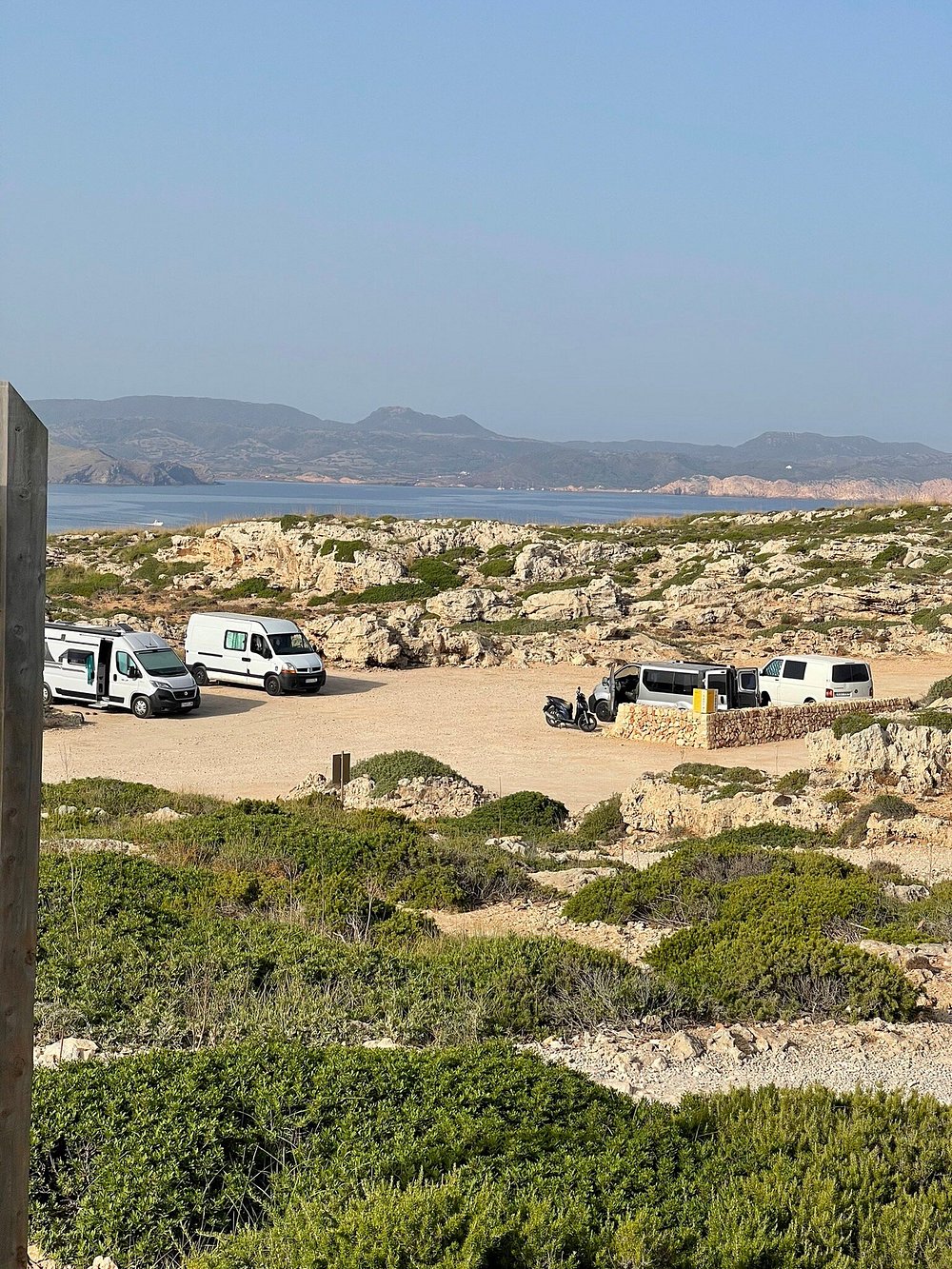
Image Source: Tripadvisor
Hiking Through the Camí de Cavalls
Walking to Pregonda means you get a taste of Menorca’s famous Camí de Cavalls trail. This old path circles the whole island, but the stretch from Binimel·là to Pregonda shows off the north coast’s wildest scenery.
The terrain feels raw and open. I passed rust-colored cliffs, sandy little coves, and spiky shrubs everywhere.
The walk isn’t hard for most people, but with zero shade, the sun can be relentless.
On my hike, I saw families, couples, and solo wanderers—all going at their own pace.
There’s nowhere to buy food or drinks along the way, so I packed snacks and lots of water.
If you love walking and want to really soak up the place, this hike is more than just a way to reach the beach—it’s part of the adventure.

Timing Your Visit for Maximum Beauty
Pregonda’s colors and landscape change with the light, so timing matters. I found that early morning or late afternoon brings out the best.
The sun sits low, shadows stretch out, and the red sands just glow. Your photos will look amazing—no harsh glare.
Midday is brutal. The sun’s strong, there’s no shade, and the walk feels twice as long if you start late.
I aimed to arrive before 10 a.m. and enjoyed cooler air and a much quieter beach. It felt even more secluded.
As the crowds grew by noon, I was glad I started early. If you want to catch sunset, remember to bring a flashlight for the walk back—the trail’s pitch dark after sunset.
These little details made my visit not just memorable, but actually comfortable.
Experiencing the Colors and Textures of Pregonda
As soon as I set off for Cala Pregonda, the wild landscape grabbed my attention. The mix of rusty-red sand, jagged rocks, and bright turquoise water looked like nowhere else in Menorca.
The Striking Red and Golden Sand
The sand here felt different from any other beach I’d visited. Pregonda’s coated in deep copper-toned grains, almost glowing under the sun.
Red and golden hues blend across the shore, so every step is a surprise of color.
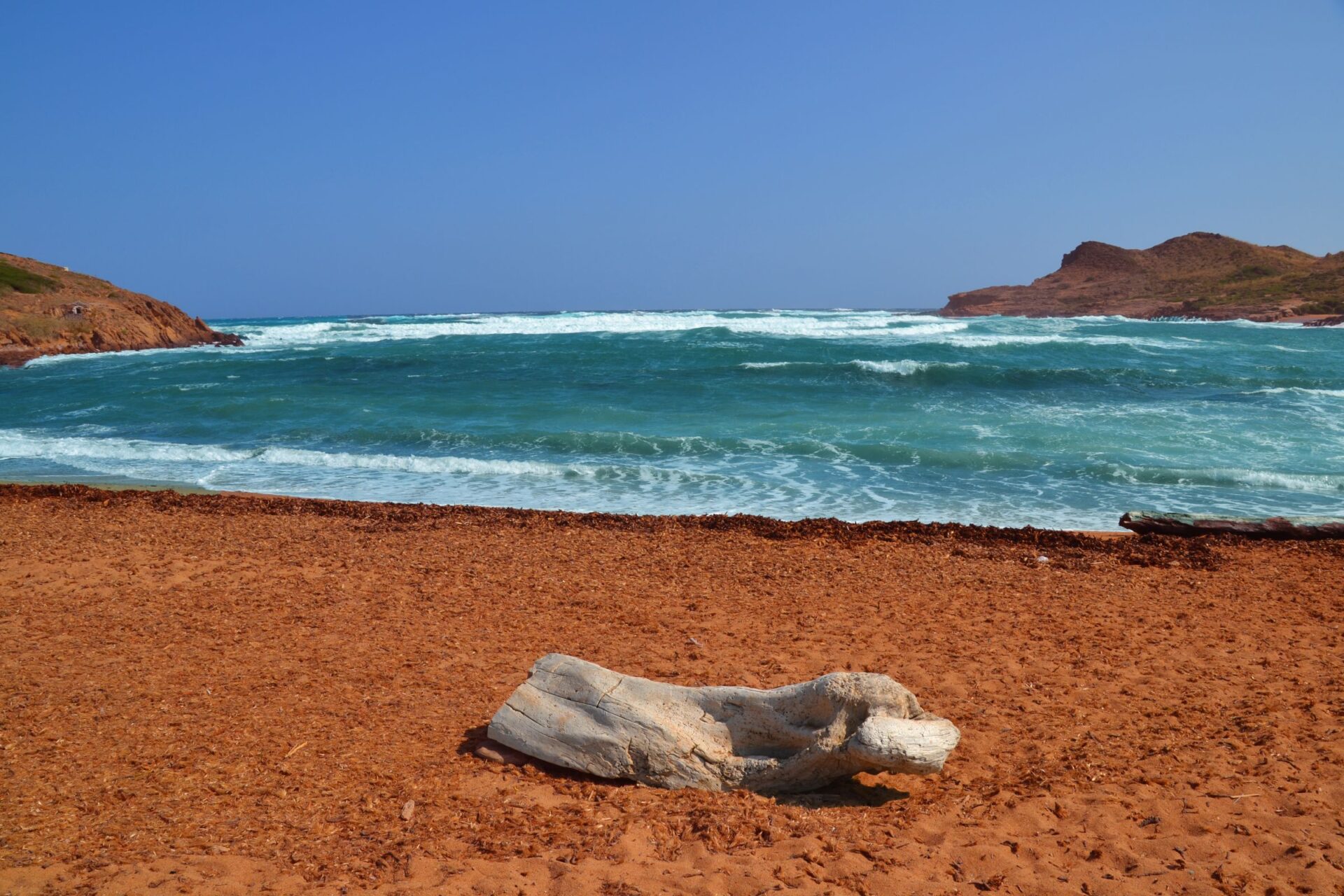
Walking barefoot, I found the sand soft but not powdery. Unlike white beaches, it didn’t stick to my skin for long.
Honestly, it felt warm but never scorching, even on a bright day.
This fiery color gives the shoreline a bold, unpolished feel. It sets Pregonda apart from every other cove nearby.
The best photos? Right after sunrise or just before sunset, when the soft light makes the red sand look extra dramatic.
Pro tip: Bring a towel that won’t stain easily. Strong reds can leave marks on lighter fabrics, especially after a swim.
Towering Rock Formations and Islands
Behind me, huge orange and golden rocks towered over the beach. These sandstone-like cliffs didn’t just look cool—they also gave me some much-needed shade.
I usually set up my things close to one of these walls to escape the afternoon sun.
Several small islands and weirdly shaped rocks rise out of the water near the shore. They make the bay look almost lunar, with rough surfaces that catch the light.
I couldn’t help but climb over the lower rocks for better views. Every angle gave me a new perspective—sometimes out to sea, sometimes back at the sweeping red sand.
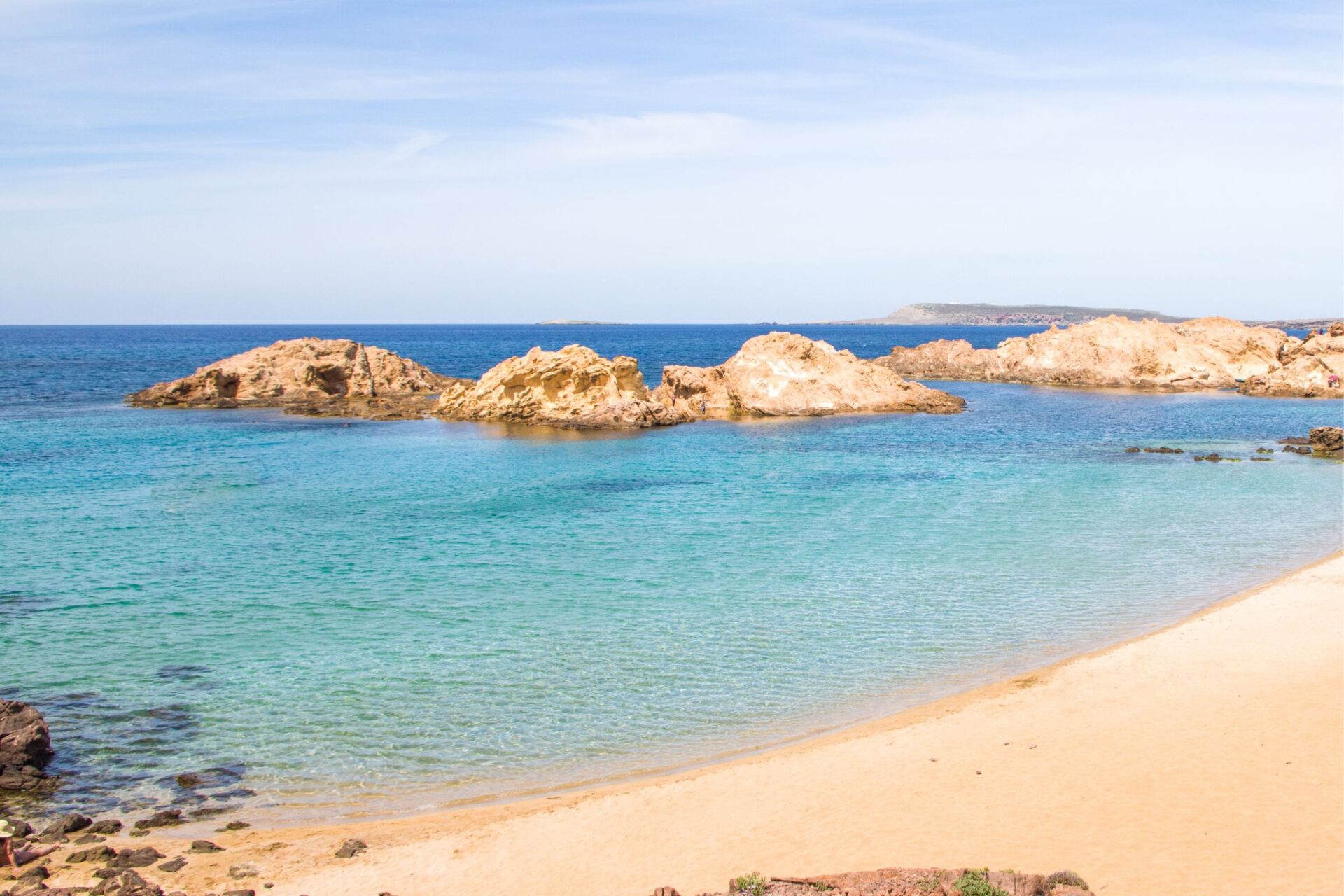
The rocks are sturdy, but shoes with good grip really help if you want to explore.
Some travelers use these rocks for snorkeling and watch fish dart around. The broken shapes also break the waves, so the main swimming area stays calm.
The Crystal-Clear Turquoise Waters
When I stepped into the water, I was amazed by how clear it was. The turquoise color pops against the dark reds and golds of the sand.
Even waist-deep, I could see my toes and little fish swimming by.
The bay stays calm most days, thanks to the protective rocks and gentle slope. The sea floor is mostly sand, with a few smooth stones.
It’s easy to wade out or just float and watch the light play underwater.
Snorkeling here is a must. I brought my mask and within minutes spotted small schools of fish.
The water felt fresh and cool—perfect after that dusty walk.
For families, the shallow shore is safe and easy for kids to explore. If you swim out farther, you get a full view of the bay, framed by those dramatic red rocks and islands.
It’s nature at its best—quietly colorful, welcoming, and totally unspoiled.
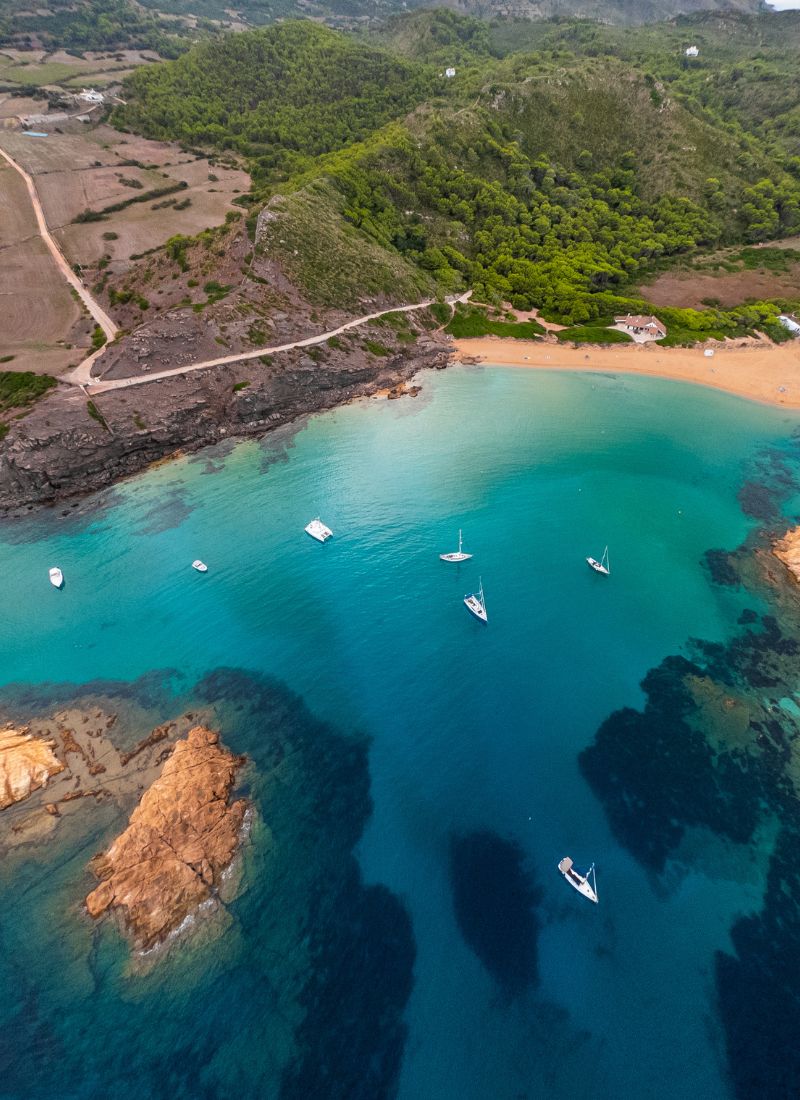
Adventures on Menorca’s Untamed Northern Shore
The north coast of Menorca feels untouched, with dramatic red sands and clear blue water surrounded by rocky cliffs.
Every visit brings new beauty—secret coves for swimming, rare plants, and busy wildlife.
Swimming and Snorkeling in Secluded Waters
The water at Pregonda almost doesn’t look real—it shifts from bright turquoise to deep blue. Getting here takes some effort.
I hiked about 40 minutes on the Camí de Cavalls trail before the first glimpse of red sand came into view.
Pregonda rarely gets crowded. I floated in the gentle surf, with only the sound of waves and wind for company.
Snorkeling is a treat. The rocky seabed is full of hiding spots for colorful fish and tiny sea creatures.
With my mask and snorkel, I watched wrasse dart through the water and even spotted an octopus tucked in the rocks.
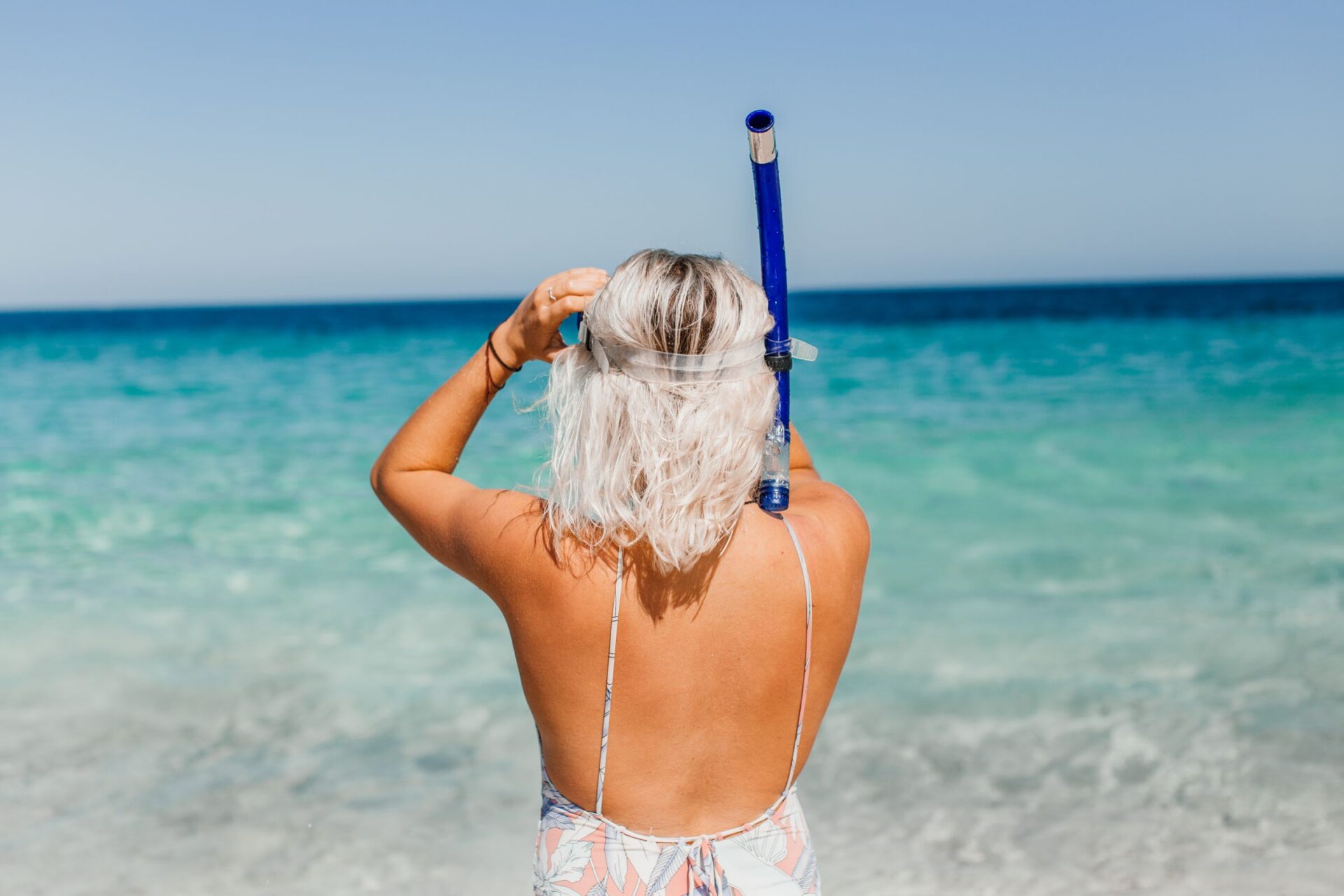
There aren’t big waves, so even less experienced swimmers can relax. Since there are no services, I made sure to bring water and sun protection.
For a while, it felt like I was discovering something few others had seen.
Wildlife and Plant Life Unique to the Area
Pregonda’s wild landscape is more than just sand and sea. As I walked, I noticed the rich red earth, tough green bushes, and wildflowers scattered about.
This northern part of Menorca supports many plants that only survive in salty, windy places.
Common Wildlife Sightings:
| Animal | Where Spotted | Notes |
|---|---|---|
| Audouin’s gull | Cliffs, shoreline | Rare in most of Europe |
| Ocellated lizard | Among rocks, sunbathing | Bright green, quick moving |
| Sea birds | Overhead, near water | Chasing small fish |
Birds stop here in spring and autumn. I paused to watch Audouin’s gulls glide above the waves.
Along the trails, small lizards darted away as I walked. If I kept quiet, I could spot them basking in the sun.
Dry, aromatic plants like rockrose and wild rosemary filled the air with a distinctive scent.
Despite the harsh winds, wildflowers still pop up in cracks between stones—a reminder of how life adapts to Menorca’s wild north.
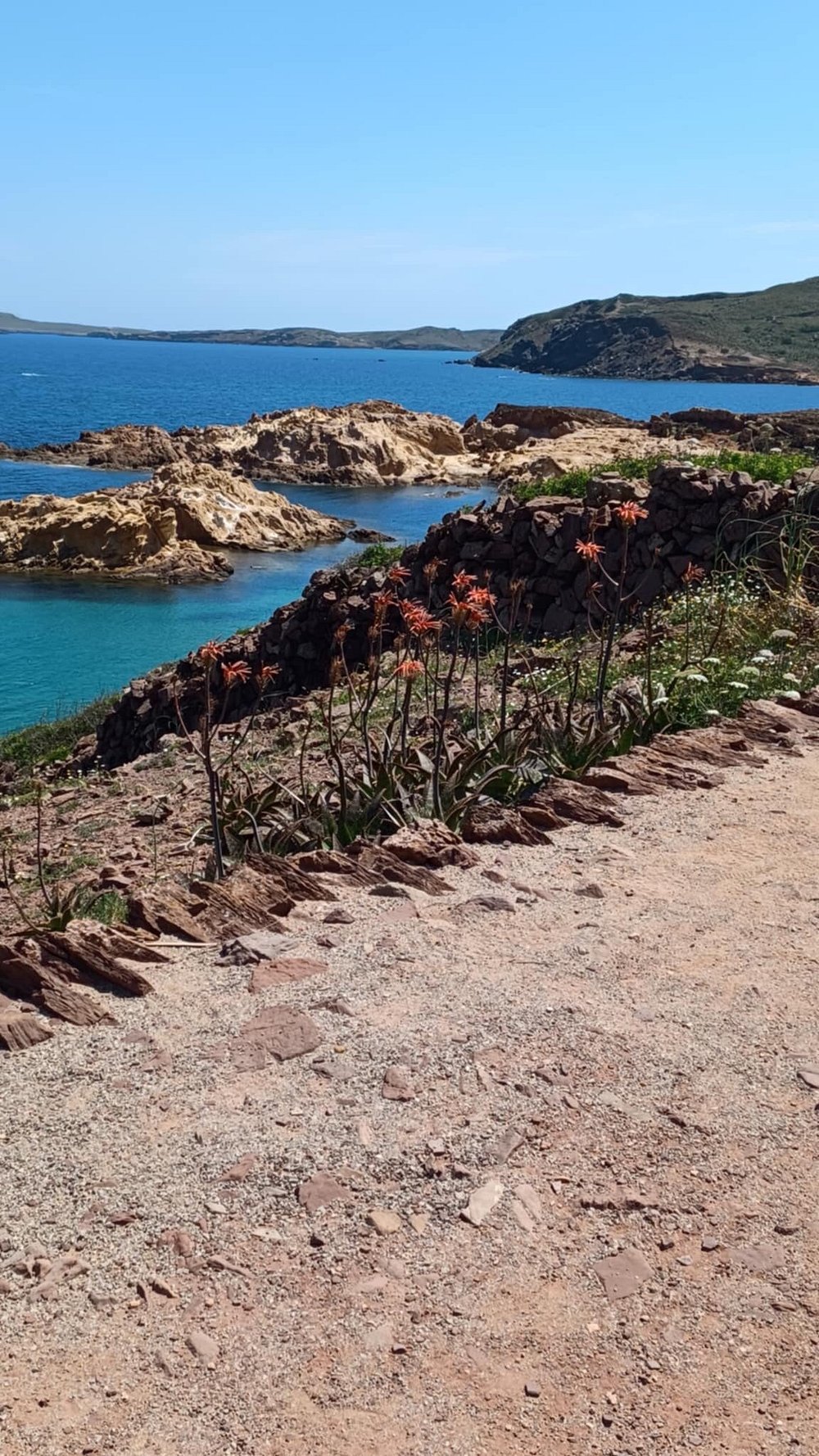
Travel Tips and Essentials for Visiting Pregonda
Pregonda means heading into wild terrain—no shops, no restaurants, and barely any shade. Every detail matters, from the shoes I wore to how I treated the fragile landscape along the way.
Packing and Preparation Advice
You’ll get to Pregonda by parking at Platja Binimel·là, then heading out on foot for about 30 minutes along a sun-baked path.
I made a point to start early—honestly, that midday sun is no joke.
I grabbed my most comfortable walking shoes for the rocky trail.
I also tossed in a wide-brimmed hat, at least 1.5 liters of water per person, sunscreen, and some layers.
If you’re headed there in spring or autumn, trust me, a light jacket comes in handy when the evening chill sneaks up on you.
Since Pregonda doesn’t offer any services, I brought all my snacks, a towel, and a little bag for trash.
I tried to keep my backpack light, but I made sure not to leave out essentials like sunglasses or a fully charged phone for snapping photos and finding my way.
Here’s my pregonda checklist:
| Item | Why I Packed It |
|---|---|
| Water Bottle | Long, sunny walk & no shops |
| Hat & Sunglasses | No natural shade |
| Comfortable Shoes | Rocky trail |
| Snacks & Towel | No services |
| Light Jacket | Evening chill |
Responsible Tourism and Protecting the Ecosystem
Pregonda’s untouched beauty really struck me right away. I always stuck to the marked paths so I wouldn’t crush the fragile dune plants.
Whenever I visited, I took out everything I brought in—food wrappers, bottles, even fruit peels. I wanted to help keep Pregonda wild for whoever comes next.
The red sands and those lunar rocks feel special, but honestly, they’re pretty fragile. I never took any stones or shells, even though it was tempting.
Watching other families do the same made me realize how much we all matter in keeping this place pristine.
I paid attention to my sunscreen, making sure it was reef-safe. Everything ends up in the sea eventually, doesn’t it?
If I spotted wildlife, I kept my distance. It’s their home, not mine.

